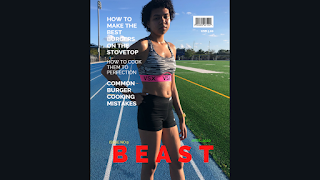After careful consideration, I have finally chosen the colors I will be using for my magazine. For the cover page, I will be using a black background with white and red coloring. Some words will also be in orange and red. The reasoning behind this is the colors reminds me of fire/ fiery. These terms are typically correlated with power. Usually, when one works out, they feel powerful afterwards or when they see results. Indeed, one gains strength so, those colors also reminds me of strength. Colors:

